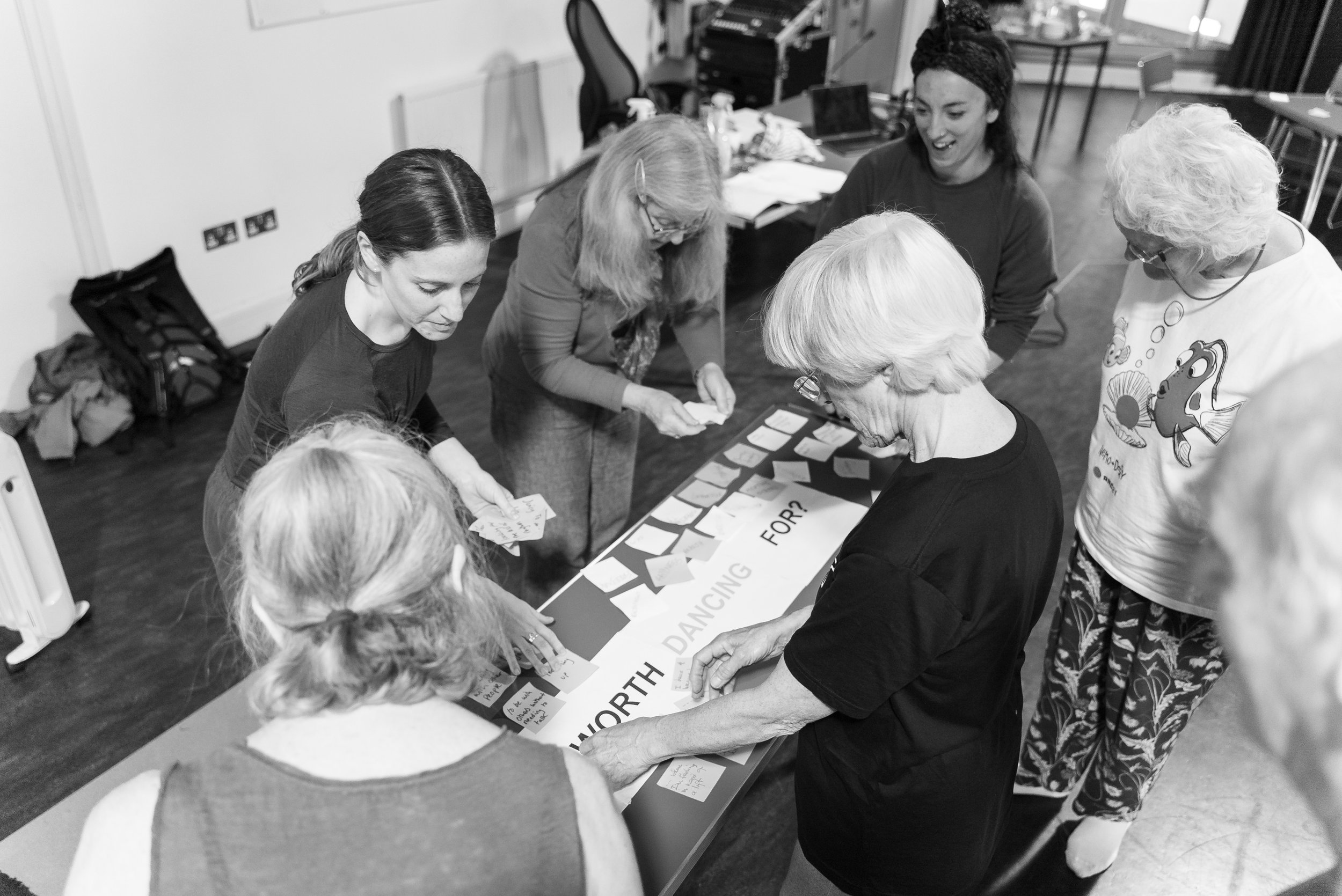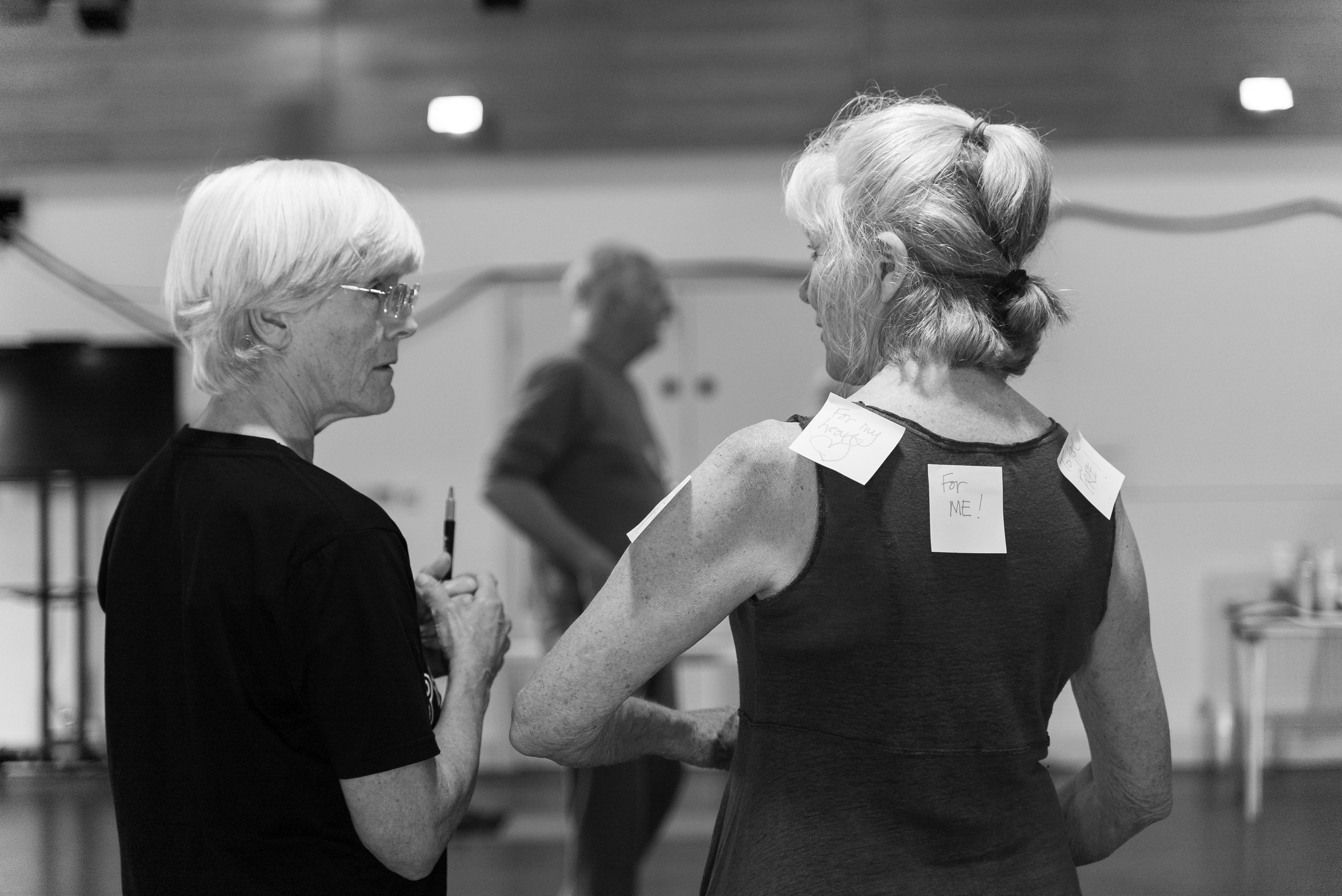ENGINE ROOM residency - FOR
‘The free expression of the hopes and aspirations of a people is the greatest and only safety in a sane society’ - Emma Goldman
The question of ‘what is worth/are we dancing for?’ is a pretty big one to unpack in five full but short days. The following blogs are a glimpse of what came out for us in exploring around the concept of for. To be for , to use for, to dance for something, towards/away, or for a specific person, idea or community. The term ‘dancing’ can be used interchangeably as a term that encapsulates expression, action, fighting for what we believe in or a collective act of resilience/resistance and/or defiance. Sometimes and a lot of the time, as Rachael Clerke pointed out, it can also be just dancing.
We met the FOR from a number of perspectives, and from a number of contexts. The solo act of dancing vs the collective act of dancing, the political, the biographical and the relational contexts of it.
To not fall down deep into the academic holes that can be found in weeks of research of this kind, our answer to this question ‘what is worth/are we dancing for?’, for us as dancers, being able to be in a room together for the first time in the longest of times, was very simply, ‘for the love of it.’ Sometimes the answer was also ‘to pay our rent’.
From the week’s explorations and from also collaborating with members of the Salisbury community. (Mind The Gap and Dance SixZero) We discovered that ofcourse the ‘for’s are vast and complex, some laying very close to our hearts, others were more practical and some it turns out can be used as tools for looking at how to vision new futures, make current realities better and as a way of understanding what is now. Each day we brought our ‘for's’ in and used them to power us to explore through movement, improvisation, discussion, text, reading, games, listening and watching how we can bring these fors out into the world.
We also had a lot of fun finding sounds to hold all this ‘for-ing’. HERE is a playlist of the weeks most popular heavy hitters.
Each day we engaged in the creation of a daily manifesto of wants, needs and ways of working in a bid to try and shake up the power dynamics of a working studio. These can be found HERE.
As part of the weeks research (as seen below) we explored through movement, conversation and creative writing with members of Salisbury Playhouse’s Mind The Gap Group and Dance SixZero the very question of what is worth dancing for.
We took these ‘for’s and expanded them into exploring what our most imagined and best dance would look like in expression of these ‘for’s.’
After some discussion and creative writing around the ‘fors’, we created an improvisational score around the methodology of flocking; we moved together, following one another, breaking away, absorbing someones movement, going solo, protesting with stillness, shaking it up, slowing it down, deciding to bring everyone with you, choosing to observe, to not participate or to disrupt the space.
Having created a physical movement together, we explored around a particular ‘for’ through creative writing, what an imagined future dance might look like it we broke through societal limitations, laws of physics and time limitations. If our dance ‘for’ something could be anything, what would it be?
We were touched, moved, and excited to hear feedback from one participant with Parkinson’s that he felt that; (paraphrased) just through the act of imagining a dance, beyond the scale of what he has previously felt his perceived physical limitations to be, that by the end of the session he physically felt freer, more open to movement and felt less restricted in his mobility.
Other participant’s fedback that by imagining the possibility of a dance that expresses the fullest extent of their ’for’, they were already wanting and inspired to move towards creating the nearest thing they could to it.
What feels exciting here, is wanting to explore the futures, dances, societal structures or otherwise, that we could work towards if we felt freer from current limitations. Can we use dance as a tool to access this and motivate to be moved towards it? We need to be able to first imagine in order to move towards.
More on the exploration of future to follow.
Below are some photographs from the workshop, one of which feels like the beginning of many; The beginning of a collection of voices of ‘fors’ and new imagined ‘dances’ and possibilities.
This first group was of a particular demographic, and I am excited to expand this work so that we can gather a broad range of voices, experiences and perspectives on ‘what is worth dancing for?’
Images: Joe Hoey










